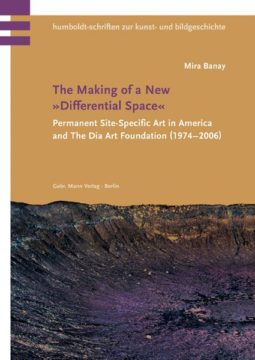Ortsspezifische Kunst entstand seit den 1970er Jahren im Südwesten der USA mit Hilfe bedeutender geldlicher Mittel der Dia Art Foundation. Die Studie erhellt die soziopolitischen Implikationen dieser Co-Produktionen von gemeinnütziger Stiftung und Künstlern wie Walter de Maria, Michael Heizer, James Turrell sowie Donald Judd und Dan Flavin – unter Berücksichtigung der Folgen für den Ort des Geschehens. Die Land Art-Projekte in der südwestamerikanischen Wüste werden ganz neu bewertet.
Permanent site-specific artworks were erected in the 1970s both in urban sites and remote deserts in southwestern United States. None of these artworks would have been possible without the support of private and public funding, with the most influential being the Dia Art Foundation. Dia, a non-profit organization, was founded in 1974 by the German art dealer Heiner Friedrich in collaboration with Philippa de Menil, an heiress to the Schlumberger OILfield services fortune. Works have been realized by Walter De Maria, Dan Flavin, Donald Judd, Michael Heizer, and James Turrell. The American desert underwent considerable change and development, gradually becoming home to scientific research centers, military installations and nuclear testing sites, as well as a hub of artistic activity. The book focuses on the socio-political significance of the site-specific art in which this multifunctional space is an essential element. The physical and social context endows the works with added values, turning them into visual signs of an alternative space. The new space the works have created may well be dubbed a ‚differential space‘, as defined by the French sociologist and philosopher Henri Lefebvre. They serve as a form of ‚reparation‘, whereby the concrete object is used to achieve repression through enchantment.
- Veröffentlicht am Montag 28. April 2025 von Mann, Gebr.
- ISBN: 9783786127055
- 264 Seiten
- Genre: Film, Fotografie, Kunst, Taschenbuch, TV, Video
